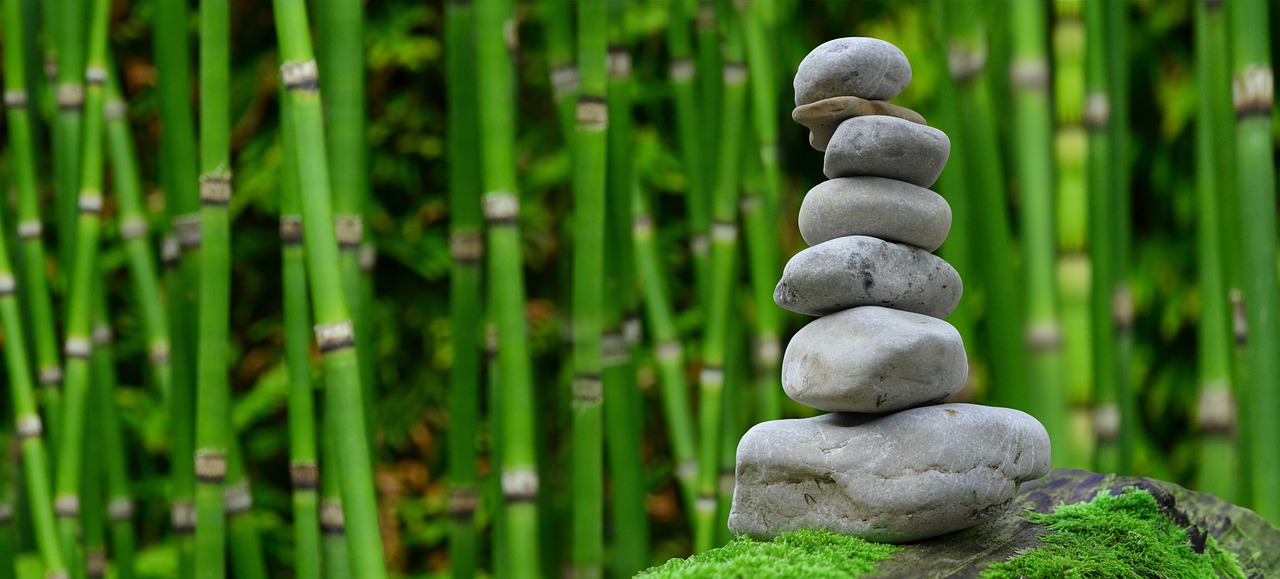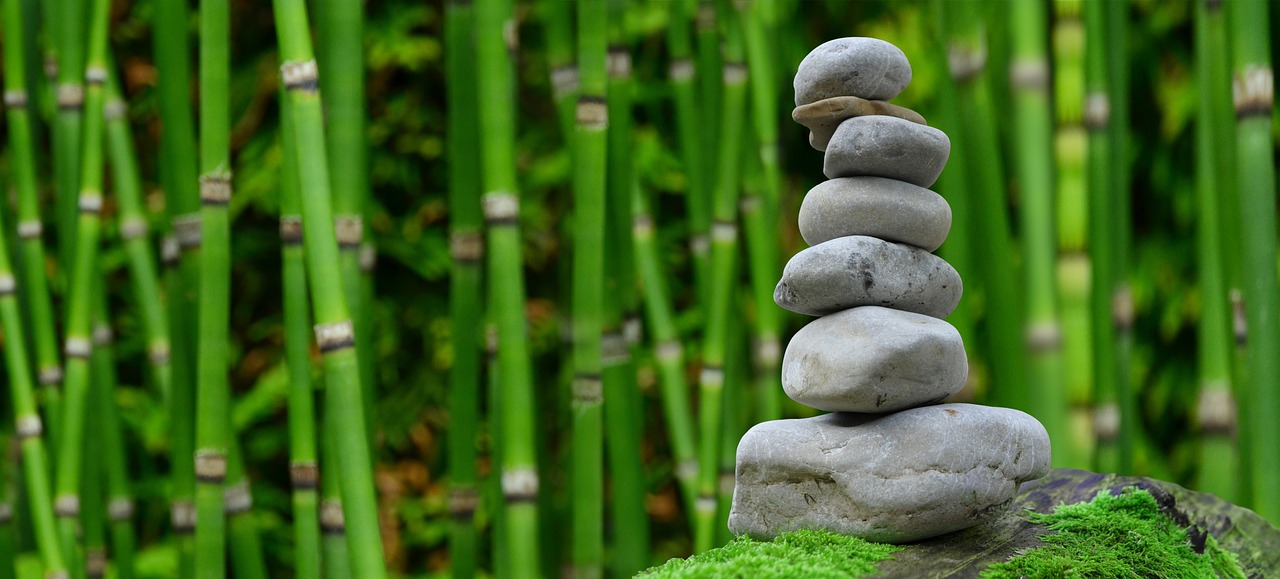In today’s fast-paced and demanding world, finding moments of peace and tranquility can be a challenge. That’s where meditation techniques come in. Whether you’re a beginner or a seasoned practitioner, meditation offers a pathway to reduce stress and promote relaxation. On IndianCulture.com, we delve into the transformative power of meditation and yoga, exploring how these ancient practices can positively impact our mind, body, and soul. Discover the secrets to inner peace and holistic well-being as we uncover the world of meditation techniques for stress relief and relaxation.

What is Meditation?
Meditation is a practice that has been used for centuries to promote relaxation, reduce stress, and enhance overall well-being. It involves training the mind to focus and redirect thoughts, resulting in a calm and peaceful state of being. While meditation is often associated with spiritual traditions such as Buddhism or Hinduism, it can be practiced by anyone, regardless of religious or cultural background.
There are numerous meditation techniques, each with its own unique approach and benefits. Whether you are a beginner or an experienced practitioner, you can find a meditation technique that suits your needs and preferences.
The Benefits of Meditation
The benefits of meditation extend beyond just relaxation. Research has shown that regular meditation practice can have a positive impact on both physical and mental health. Here are some of the key benefits of meditation:
-
Stress Reduction: One of the primary reasons people turn to meditation is to reduce stress. By calming the mind and focusing on the present moment, meditation helps to alleviate the negative effects of stress on the body and mind.
-
Improved Emotional Well-being: Meditation can help regulate emotions and improve emotional well-being. It allows individuals to develop a greater sense of self-awareness and understanding, leading to a more balanced and positive emotional state.
-
Enhanced Concentration and Focus: Regular meditation practice strengthens the ability to maintain focus and concentrate on tasks. This can be particularly beneficial for those who struggle with ADHD or have difficulty staying focused for extended periods.
-
Better Sleep: Meditation has been shown to improve sleep quality and reduce insomnia. By promoting relaxation and reducing anxiety, it creates an optimal environment for restful sleep.
-
Increased Self-Reflection: Meditation encourages introspection and self-reflection, leading to a deeper understanding of oneself and one’s life purpose. This can aid in personal growth and development.
-
Lower Blood Pressure: Studies have found that meditation can lower blood pressure and reduce the risk of heart disease. By inducing a state of relaxation, meditation promotes cardiovascular health.
-
Enhanced Mindfulness: Mindfulness is the practice of being fully present in the moment and aware of one’s thoughts and feelings. Regular meditation cultivates mindfulness, allowing individuals to live more fully in the present and appreciate the simple joys of life.

Types of Meditation Techniques
There are many different types of meditation techniques, each with its own focus and approach. Here are some popular meditation techniques that you can explore:
Mindfulness Meditation
Mindfulness meditation involves focusing one’s attention on the present moment without judgment. It involves observing thoughts and sensations as they arise and letting them go without getting caught up in them. Mindfulness meditation can be practiced both formally, through seated meditation, and informally, by bringing mindfulness to everyday activities.
Transcendental Meditation
Transcendental Meditation (TM) is a technique that involves silently repeating a mantra, a specific word or phrase, in order to achieve a state of deep relaxation and transcendence. TM is typically practiced for 15-20 minutes twice daily and is known for its simplicity and effectiveness in reducing stress and promoting inner peace.
Loving-Kindness Meditation
Loving-Kindness meditation, also known as Metta meditation, involves cultivating feelings of love, compassion, and goodwill towards oneself and others. It typically involves silently repeating phrases such as “May I be happy, May I be safe, May I be healthy, May I live with ease” while visualizing someone for whom you have positive feelings.
Breathing Meditation
Breathing meditation involves focusing on the breath as a way to calm and center the mind. It can be practiced by simply observing the natural rhythm of the breath or by actively controlling the breath through techniques such as deep belly breathing or alternate nostril breathing.
Mantra Meditation
Mantra meditation involves repeating a sacred or meaningful word or phrase, known as a mantra, to quiet the mind and enter into a state of deep meditation. The repetition of the mantra helps to anchor the mind and prevent it from wandering.
Body Scan Meditation
Body scan meditation involves systematically bringing awareness to different parts of the body, starting from the top of the head and moving down to the toes. It helps to cultivate a sense of relaxation and awareness of bodily sensations.
Preparing for Meditation
Before you begin your meditation practice, it’s important to create an environment that is conducive to relaxation and focus. Here are some tips to help you prepare for meditation:
Find a Quiet Space
Choose a quiet and peaceful space where you can meditate without distractions. It could be a designated meditation room, a corner of your bedroom, or even a peaceful spot in nature.
Set a Time
Decide on a specific time for your meditation practice and make it a regular part of your daily routine. Consistency is key when it comes to reaping the full benefits of meditation.
Get Comfortable
Find a comfortable seated position that allows you to relax and maintain good posture. You can sit on a cushion or a meditation bench, or even use a chair if that is more comfortable for you.
Clear Your Mind
Take a few moments to clear your mind of any mental clutter or distractions. You can do this by taking a few deep breaths, closing your eyes, and consciously letting go of any thoughts or worries that may be occupying your mind.

Basic Meditation Techniques
If you’re new to meditation, it’s helpful to start with basic techniques that are easy to grasp and require minimal guidance. Here are some basic meditation techniques you can try:
Focused Attention Meditation
In focused attention meditation, the focus is on a specific object or sensation, such as the breath or a candle flame. Whenever your mind wanders, gently bring your attention back to the chosen object.
Open Monitoring Meditation
Open monitoring meditation involves being fully present and aware of whatever arises in the present moment. Rather than focusing on a specific object, you observe thoughts, emotions, and sensations as they come and go, without judgment or attachment.
Guided Meditation
Guided meditation involves listening to a recorded meditation or following the instructions of a teacher or guide. This can be particularly helpful for beginners who may find it challenging to quiet the mind on their own.
Walking Meditation
Walking meditation is a form of meditation that involves bringing awareness to the physical sensations and movements of walking. It can be practiced indoors or outdoors and is a great way to combine mindfulness with physical activity.
Advanced Meditation Techniques
Once you have established a regular meditation practice and feel comfortable with basic techniques, you may be ready to explore more advanced meditation techniques. Here are a few advanced techniques you can consider:
Zen Meditation
Zen meditation, also known as Zazen, is a form of meditation that is practiced in a seated position with eyes partially open. The focus is on maintaining a state of pure awareness, without getting caught up in thoughts or sensations.
Vipassana Meditation
Vipassana meditation, also known as insight meditation, involves observing the body, feelings, thoughts, and sensations with a sense of detachment and equanimity. It aims to develop insight and understanding into the true nature of reality.
Kundalini Meditation
Kundalini meditation involves activating and awakening the dormant spiritual energy, known as Kundalini, which is said to reside at the base of the spine. This technique often involves practices such as chanting, breathwork, and visualization.
Chakra Meditation
Chakra meditation focuses on balancing and activating the energy centers in the body known as chakras. It involves visualizing and directing energy to different chakras to promote physical, emotional, and spiritual well-being.
Meditation Postures
The choice of meditation posture can greatly affect the quality of your meditation practice. Here are some common meditation postures you can try:
Lotus Position
The lotus position is a classic meditation posture in which you sit cross-legged with each foot resting on the opposite thigh. This posture is commonly associated with meditation due to its ability to promote stability and grounding.
Half-Lotus Position
The half-lotus position is a variation of the lotus position in which one foot is placed on the opposite thigh while the other foot rests on the floor. This posture provides a greater degree of flexibility for those who find the full lotus position uncomfortable.
Sitting Cross-Legged
Sitting cross-legged on a cushion or mat with the legs loosely crossed is a comfortable and accessible meditation posture. This posture provides a stable base while allowing the spine to remain straight.
Seated on a Chair
If sitting on the floor is uncomfortable, you can practice meditation while sitting on a chair. Sit with your feet flat on the ground, your back straight, and your hands resting on your thighs.
Corpse Pose (Savasana)
Corpse pose, also known as Savasana, is a lying-down position that is often used for relaxation and meditation. Lie flat on your back with your arms by your sides and your legs slightly apart. This posture is ideal for deep relaxation and body awareness.
Tips for a Successful Meditation Practice
To get the most out of your meditation practice, here are some tips to consider:
Start with Short Sessions
If you’re new to meditation, start with short 5-10 minute sessions and gradually increase the duration as you become more comfortable. It’s better to have a consistent practice of shorter sessions than to attempt longer sessions sporadically.
Be Consistent
Consistency is key when it comes to meditation. Try to set aside a specific time each day for your practice and make it a non-negotiable part of your routine. Consistency will help you cultivate a deeper sense of presence and mindfulness.
Create a Routine
Creating a meditation routine can help signal to your mind and body that it’s time to relax and focus. This could involve lighting a candle, playing soothing music, or engaging in a short ritual before you start your practice.
Focus on the Present Moment
The essence of meditation is to be fully present in the here and now. Rather than getting caught up in thoughts about the past or worries about the future, focus your attention on the present moment and the sensations of the breath or your body.
Be Gentle with Yourself
Don’t expect your mind to be completely free of thoughts during meditation. It’s natural for thoughts to arise, and the key is to gently acknowledge them and let them go without judgment or attachment. Be patient with yourself and trust that with practice, your meditation skills will improve.
Experiment with Different Techniques
Don’t be afraid to explore different meditation techniques to find what works best for you. Every individual is unique, so it’s essential to find a technique that resonates with you and meets your specific needs.
Common Challenges in Meditation
While meditation can be a transformative practice, it is not without its challenges. Here are some common challenges you may encounter during meditation and how to address them:
Restlessness and Impatience
Feeling restless or impatient is a common obstacle in meditation. If you find yourself getting antsy or wanting to end the session prematurely, remind yourself that meditation is a process and that restlessness is natural. Try to bring your attention back to the present moment and the sensations of your breath or body.
Difficulty Concentrating
It’s normal for the mind to wander during meditation, but it can be frustrating when you find it challenging to maintain focus. If you’re having difficulty concentrating, try using a meditation technique that involves an anchor, such as focusing on the breath or repeating a mantra. This can help bring your attention back whenever it starts to wander.
Physical Discomfort
Sitting for an extended period can sometimes cause discomfort, especially if you’re not accustomed to it. If you experience physical discomfort during meditation, try adjusting your posture or using props such as cushions or blankets to support your body. You can also explore different meditation postures to find one that is more comfortable for you.
Intrusive Thoughts
Intrusive thoughts are thoughts that arise involuntarily and can be distracting during meditation. The key is not to resist or engage with these thoughts but to observe them with detachment and let them pass. If you find that certain thoughts are persistent, you can try gently redirecting your focus back to your breath or chosen object of meditation.
Drowsiness or Falling Asleep
Feeling drowsy or falling asleep during meditation can be a sign of deep relaxation, but it can also hinder your ability to stay focused. If drowsiness becomes a recurring issue, try meditating at a different time of day when you’re more alert. You can also experiment with opening your eyes slightly or sitting in a more upright posture to stay awake.
Guided Meditation Apps and Resources
If you’re looking for additional guidance and support in your meditation practice, there are several guided meditation apps and resources available. These resources provide a variety of guided meditations for different purposes, such as stress reduction, sleep, or self-compassion. Some popular meditation apps include Headspace, Calm, Insight Timer, and Buddhify.
In conclusion, meditation is a powerful practice that can bring numerous benefits to both your physical and mental well-being. By exploring different meditation techniques, finding a comfortable posture, and establishing a consistent practice, you can experience the transformative effects of meditation in your own life. Remember to approach meditation with an open mind, be patient with yourself, and enjoy the journey of self-discovery and inner peace.
